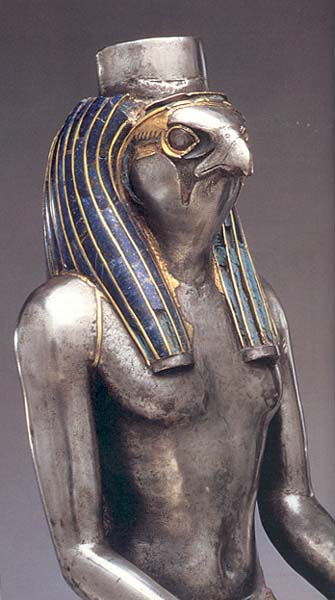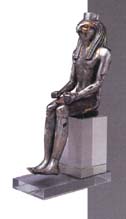
A piercing eye, carved from rock crystal, lends this Egyptian cult statue the fierce mien of a bird of prey. The effect is enhanced by the eye’s white pupil, formed by a hole drilled almost to the surface from behind. The statue is thought to depict the deity Horus, the guardian of pharaohs, who was often depicted as a falcon-headed man or simply as a falcon.
Cast of solid silver, the statuette was originally covered with gold leaf, which was attached along gold seams, visible running from shoulder to armpit. The figure’s wig is inlaid with lapis lazuli—a deep blue stone whose appearance the Egyptians compared with the heavens. They considered the stone, imported from Afghanistan and the Near East, nearly as precious as gold and silver. The bird-headed figure probably originally carried an ankh, the Egyptian symbol of life, in his right hand, and a scepter in his left. The silver cylinder atop the head once secured a headpiece, also missing.

The falcon represented the physical manifestation, or ba, of Horus. Several lesser deities were also associated with the falcon, however; and without any distinctive headgear, it is impossible to identify this figure firmly. The designation as Horus is likely because the shape of the headpiece attachment is similar to that on statues of Horus wearing a double crown, a combination of the crowns of Upper and Lower Egypt, which symbolizes the unification of the two regions under one pharaoh.
Already a library member? Log in here.
Institution user? Log in with your IP address.

